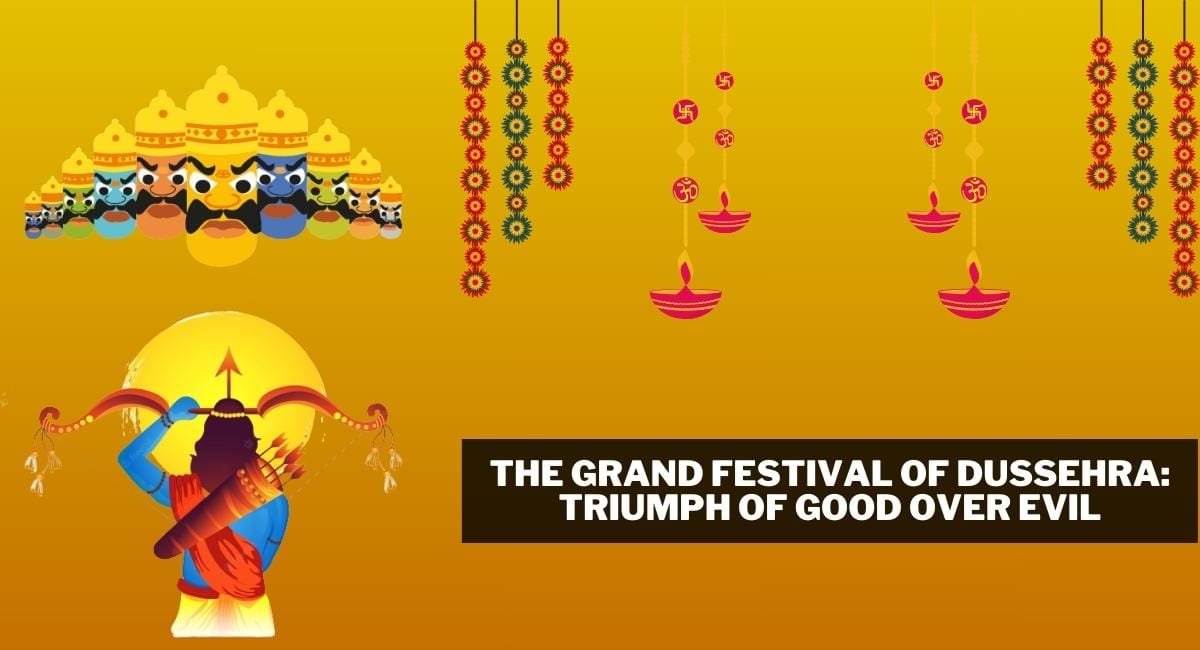Dussehra, also known as Vijaydashmi, is one of the most vibrant and loved festivals celebrated across India. The joyous occasion marks the culmination of the ten-day festival of Navratri and stands for the triumph of good over evil. Dussehra is a time when families celebrate this festival together and go watch the effigy of Ravana burning. In this blog, we will explore the various aspects of this grand festival.
Historical and Mythological Significance
Dussehra is deeply rooted in Indian mythology and history. The most common legend associated with the festival is the victory of Lord Rama over the demon king Ravana. According to the epic Mahabharata, Lord Rama, along with his devoted brother Laxman and monkey god Hanuman, rescued his wife Sita from Ravana’s captivity and came to Ayodhya after a long exile of 14 years. The burning effigies of Ravana, Meghnad, and Kumbhakarna during this time symbolize the victory of good over evil.
The Buildup: Navratri Festival
Dussehra is the culmination of the nine days of Navratri where people celebrate and worship Goddess Durga. During Navratri people indulge in fasting, praying, organizing, and attending Garba and Dandiya nights while adorning themselves in beautiful attires. The atmosphere is completely soaked in devotional vibes and beautiful chirpy music. The home mandir is decorated with beautiful flowers such as Marigolds, Rose, Jasmine, Hibiscus
The tenth day after is celebrated as Dussehra, symbolizing the victory of Goddess Durga over the demon Mahisasura.
Symbolic Acts of Dussehra
Ramlila:
Remember the times in our childhood when we would all get ready at night during the days of Navratri to go and watch the enactment of Ramayana, also known as Ramlila. It is one of the most anticipated events of the days of Navratri and is looked forward to by both children and adults alike.
Effigy Burning:
On the day of Dussehra people gather around huge effigies made of the demon king Ravana and his brother Kumbhakaran and son Meghnad. They watch them burn and their hearts are filled with the hope that eventually good wins over evil. The celebration is often accompanied by fireworks, cheers, and celebrations.
Worship of Weapons:
On this day, people worship their weapons, tools, and instruments and do not use them on this day as a sign of respect and gratitude. It is believed that doing so will ensure that the tools will bestow their blessings on them and ensure their effectiveness and safety throughout the year.
Regional Diversity:
Dussehra is celebrated with diverse customs and traditions across India.
In the north Indian state of Uttar Pradesh, the festival is a grand affair with massive processions and effigies, which are decorated elaborately.
In the southern state of Karnataka, the festival is marked by the grand Mysore Dasara, where the Mysore place is illuminated and adorned with beautiful decorations.
In West Bengal, the festival of Dussehra coincides with Durga Puja, another grand celebration of the Goddess Durga’s victory over buffalo demon Mahisasur.
In Gujarat, the festival is celebrated with Garba and Dandiya dances.
Conclusion
The festival of Dussehra is not just a celebration but it is an emotion that is a part of us and makes us feel closer to our families and traditions by bringing us all together to have fun with our loved ones. It is a time to exchange gifts, sweets, and good wishes.


0 Comment